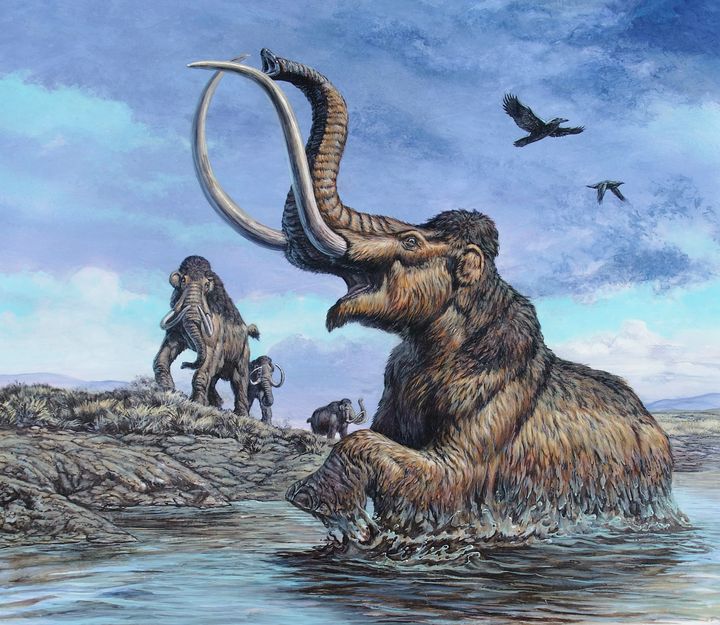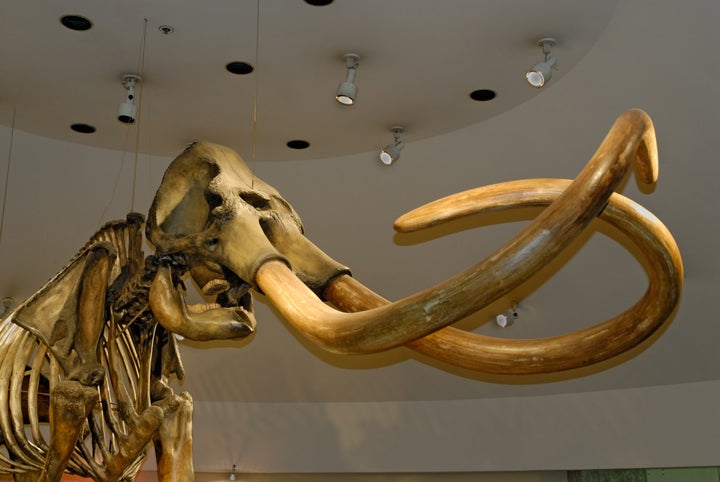
Imagine being at work and stumbling, completely by chance, upon a mammoth discovery -- a literal one, at that.
That’s what happened last month to a bulldozer operator in northwestern Oklahoma, who found the remains of a Columbian mammoth while on the job.
According to the Oklahoma Archeological Survey, the man was working at a sand pit near Alva when he made the surprise find. A partial mammoth skull (pictured above), along with two tusks, have since been unearthed from the area.
“We don't know the cause of death. There is no sign that people killed or butchered it,” archeologist Lee Bement told Live Science of the animal remains, which have yet to be dated. “Its skull was washed around in the river. The rest of the animal could be anywhere.”
Mammoth discoveries in the U.S. are not entirely unusual. Earlier this year, a mammoth femur was found under Oregon State University's football field, and last September, two Michigan farmers stumbled upon mammoth remains in a soybean field.
Bement told Live Science that Oklahoma is home to about three “mammoth sightings” a year. Still, each new discovery brings hope of something new and unexpected.
“Archeological fieldwork is always exciting. You never know what you are going to find,” he said.

As The Associated Press noted, Columbian mammoths were a common sight across the Plains until they -- along with many large Ice Age animals, including mastodons, giant sloths and giant bears -- went extinct at the end of Pleistocene era about 11,000 years ago. Scientists are still unsure as to what prompted this mass die-off, though hunting by humans and climate change have been floated as possible culprits.

